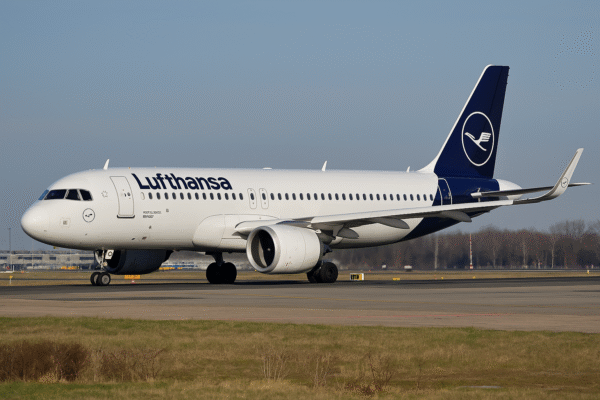Countries across Asia, Europe, and Africa are experiencing an unprecedented wave of Chinese visitors during this year’s National Day holiday. With governments simplifying entry procedures and introducing visa-free policies, hotel bookings in destinations such as Malaysia, Thailand, South Korea, Vietnam, Japan, Egypt, Uzbekistan, Cambodia, and Sweden have surged dramatically.
China’s Golden Week, traditionally one of the busiest travel periods, has expanded this year into a longer holiday window. The extension, combined with streamlined visa arrangements, has encouraged Chinese travelers to plan longer trips abroad, spurring significant demand for hotel stays and international flights.
Travel Interest Soars Ahead of Golden Week
Reports show that bookings by Chinese tourists have jumped by more than 130% compared with the same period last year. This surge reflects both renewed confidence in international travel and the increasing appeal of destinations offering hassle-free entry.
More than 2,800 hotels worldwide have reported spikes in reservations linked to the holiday. While perennial favorites like Japan, Thailand, and South Korea continue to dominate, newer destinations such as Egypt, Uzbekistan, and Sweden are also benefitting from this expanded travel interest.
Longer Holidays, Longer Journeys
The National Day holiday in 2025 spans from September 29 to October 12, creating a rare opportunity for extended vacations. Many office workers in China are using just a few days of leave to stretch their holiday into a 12-day trip.
This extended break is fueling demand for long-haul travel to destinations previously considered too distant for shorter vacations. From Europe’s historic capitals to Africa’s wildlife havens, Chinese travelers are seizing the chance to immerse themselves in new cultures and landscapes.
Visa-Free Policies as a Catalyst
The driving force behind this surge is the expansion of visa-free or simplified entry programs. Southeast Asian nations, including Malaysia, Singapore, and Thailand, have introduced reciprocal arrangements that make it easier for Chinese nationals to enter without long application processes.
Beyond Asia, countries such as South Korea, Uzbekistan, and Russia have simplified group travel visas, while Sweden has seen growing interest as a long-haul European destination accessible through simplified procedures. For many travelers, this convenience reduces barriers and allows for spontaneous bookings, broadening their holiday options.
Shift Toward Immersive Travel
Chinese tourists are also changing the way they travel. Instead of whirlwind tours of multiple destinations, many are choosing in-depth exploration of a single country. This trend is evident in bookings for Egypt, where travelers are drawn to its ancient monuments and mild autumn climate.
Similarly, demand for trips to Russia, Norway, and Central Asia reflects growing interest in cultural immersion. Norway’s fjords, Russia’s northern lights, and Uzbekistan’s Silk Road heritage sites are increasingly popular, offering experiences that blend history with natural wonder.
Belt and Road Destinations Rising
China’s Belt and Road Initiative (BRI) has also influenced travel patterns. Countries along trade and development routes, including African destinations like Kenya and Tanzania, are witnessing sharp rises in Chinese arrivals. Year-on-year, bookings to East Africa have climbed by more than 130%, highlighting an appetite for destinations outside traditional Asian and European circuits.
For these nations, the influx of Chinese tourists represents not just tourism revenue but also stronger cultural and economic ties linked to the broader BRI framework.
Southeast Asia Remains a Favorite
Despite the growth of long-haul destinations, Southeast Asia continues to lead in overall numbers. Singapore, Malaysia, and Thailand remain top choices due to their proximity, rich cultural offerings, and reputation for hospitality. The convenience of short-haul flights, combined with visa-free access, makes them ideal for both first-time and repeat Chinese visitors.
These countries are also promoting themselves as hubs for family-friendly vacations, wellness retreats, and culinary tourism, aligning well with the evolving preferences of Chinese travelers.
Inbound Travel to China Expands
Interestingly, while outbound tourism is booming, China itself is also welcoming more visitors during the holiday. Major cities such as Beijing, Shanghai, Guangzhou, Chengdu, and Shenzhen are expected to see surges in foreign arrivals.
Travelers from Uzbekistan, Kazakhstan, Spain, Hungary, and Saudi Arabia are among those showing increased interest in exploring China’s mix of modern skylines, ancient landmarks, and cultural heritage. This reciprocal growth underscores China’s expanding role as both a leading source of global tourism and a destination in its own right.
Tourism Businesses Prepare for Record Demand
Travel agencies, airlines, and hotel operators are scaling up to meet the unprecedented demand. Flexible booking options, multilingual services, and mobile payment systems widely used in China are being expanded across popular destinations to accommodate the influx.
For the tourism industry, the current trend highlights the importance of adapting to Chinese consumer preferences—from digital booking platforms to culinary offerings that cater to both familiarity and adventure.
A Turning Point for Global Tourism
The 2025 National Day holiday marks a significant turning point in global tourism flows. With more Chinese travelers seeking longer, immersive cultural experiences, destinations worldwide are benefitting from increased bookings and spending.
Visa-free entry has become a powerful tool in attracting Chinese tourists, opening the door to new destinations while sustaining the popularity of established ones. As more countries recognize the economic value of welcoming Chinese visitors, this model is likely to expand further.
Conclusion: A New Era of Chinese Travel
The surge in outbound and inbound tourism connected to China’s National Day holiday reflects broader shifts in global travel. For Chinese tourists, the combination of extended holidays, visa-free entry, and a desire for deeper cultural connections is reshaping travel habits.
For destination countries, the influx of visitors represents both opportunities and challenges—requiring investment in infrastructure, services, and sustainable tourism strategies.
As the holiday season unfolds, it is clear that Chinese tourism has entered a new era—one that will influence global travel trends for years to come.
For more travel news like this, keep reading Global Travel Wire


















